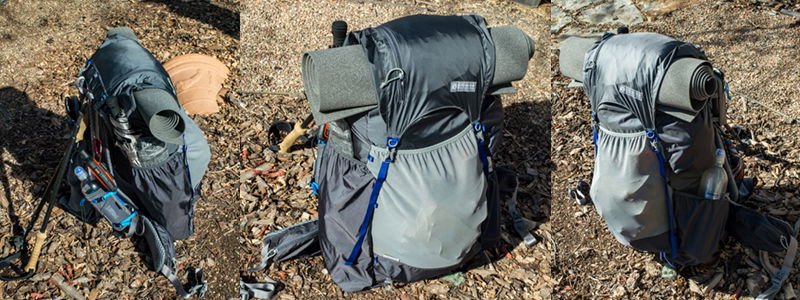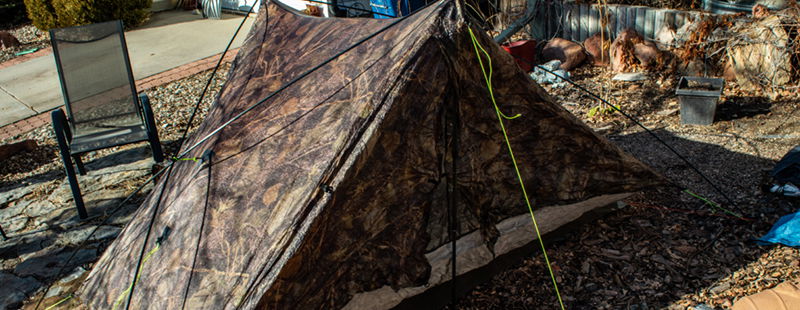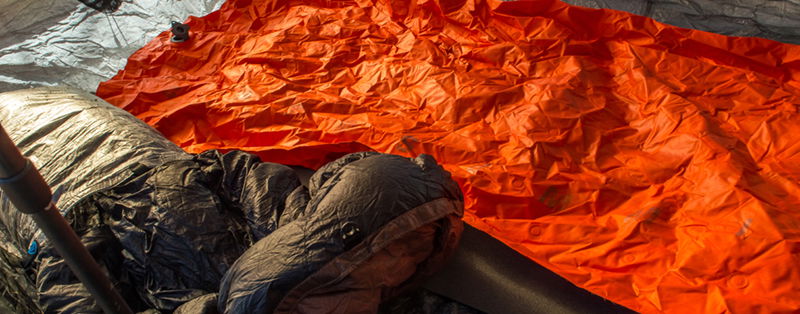Hiking Gear for the Arizona Trail
If you’ve been following me, you will know that in 2018 I hiked the 500-mile Colorado Trail and then wrote a book about it. That hike was a dream come true for me and it launched me into a place where I now live and breath thoughts of long-distance hiking.
Much to the disappointment of my inner free man, I went back to working for a living after my Colorado Trail hike. It seems I’m not quite ready to hang up full-time employment. But soon.
While I wait to be released from these retirement account contribution chains, I’ve been planning shorter hikes of maybe a couple weeks long - which feels like it's just teasing the monster within. Among these plans is included a two-week journey on the southern most portion of the Arizona Trail (AZT).
The AZT is 800 miles long extending from the U.S. border with Mexico to the Utah state line. Arguably the greatest highlight of this trail is a rim-to-rim hike of the Grand Canyon. People like me, however, find treasured memories in even the most unsuspecting parts of every trail. So, I guess we'll have to wait and see what the desert southwest offers me.
Late February or early March is prime time to start a north bound AZT hike. Waiting longer will make for hellish hot days and probably more rattle snakes and other unique desert critters than I am not yet accustomed to entertaining. Between late February and late April is when you'll see the greatest population going north bound on this trail. Southbounders typically make a go of it in October/November.
This year I will begin at the U.S.-Mexico border and hike north for 150 miles over a 10-day period to just outside of Tucson. I’ll be hiking through the Huachuca Mountains; Miller Peak Wilderness and Mount Wrightson Wilderness in Coronado National Forest; the Santa Rita Mountains, and the Rincon Valley. The trail is peppered with places that bear the sir name of Canyon: Montezuma, South Fork Ash, Copper, and Cave. And that's just the first seven miles. Yes, Arizona is quite rugged and mountainous.
I am told this hike is tougher than what most people realize. The elevation of this 150-miler will peak out at just over 9000 ft and reach as low as 3000 ft. The information online suggests it will be warm during the day and cold at night, a 40-50 degree swing. I expect some rain and I will likely experience snow at the higher elevations. If it's a wetter than normal year I am told there will be mud - lots of slippery, nasty mud. Armed with this information I will be prepared to endure the elements.
My pack list is included in the section below. I’m not interested in being ultralight (10 pounds or less base weight). Rather, I am interested in going as light as I can afford while still carrying what I feel I need to be relatively comfortable and safe over those 10 days. My total base weight comes in at just over 15.5 pounds.
Here’s my list:

Pack - I'll be taking my trusty and faithful Gossamer Mariposa pack with hip belt and a couple of shoulder strap pockets. (33 oz)

Shelter - My dwelling will include the ZPacks Duplex tent with eight TNH stakes, the tent Flex Kit, and a footprint. I normally don't take a foot print or the flex kit. But the desert soil can be very hard to drive stakes into; so having the option of a free-standing tent (flex kit) is attractive to me - and I'm told by a local that non-free-standing tents can be challenging along this trail. I also don't often take a foot print, but there are lots of prickly things in the desert that can penetrate the bottom of tents and deflate air mattresses. So, I made a footprint out of some spare weed blocker fabric which should give me extra protection. (40 oz)

Sleep System - I will take my Loco Libre 20 degree sleeping quilt, Sea to Summit insulated air mattress, Klymit X air pillow, 1/8 inch foam pad, and contain all this in a water proof dry sack. I much prefer a quilt over a sleeping bag because I'm a bit too constrained in a sleeping bag and a quilt is lighter. I have several insulated air mattresses, my Sea to Summit is my lightest and most comfortable. And because of some health issues, I sleep much better with my head elevated - the pillow helps. The foam pad as a measure to protect against punctures in my air mattress was a recommendation from others who have hiked this trail. (42 oz)

Cloths - My cloths include an extra pair of Darn Tough socks, extra Injinji liners, my Patagonia puff jacket, Outdoor Research rain pants (mostly for sleeping), thermal bottoms for sleeping, long sleeve merino wool shirt for sleeping, down socks (my feet get cold at night), simple liner gloves, Mountain Laurel Designs rain mitts, Outdoor Research Helium II rain jacket, neck gaiter, and I'll put all this in a water proof stuff stack. (51 oz)

Kitchen/Hydration - I'm be using the Katadyn BeFree water filter. I'll take a re-purposed Jiffy Peanut Butter jar for cold soaking, 2 one liter SmartWater bottles, 2 two liter bladders, titanium spork, and a water proof food bag. I've chosen to sleep with my food on this trip. Although I have the option to hang my food with some rope I'll bring, I don't feel the threat of bears is very high in the sections I'll be hiking this year. Many other experienced AZT hikers agree. (33 oz)

Electronics - I'll be doing videos along the way, so I'll take my Sony action camera with a small Joby tripod and a couple extra batteries. I'll also have a very light weight flash light and camera charger. I'll take my Anker 10000 battery that I'll charge with my RAVPower solar power system. I've chosen this power setup, even with the extra weight, because I want to minimize my time in town charging batteries. It takes at least 5 hours to charge my Anker, which amounts to a half day of lost trail time and a larger budget because staying in town usually means spending more money on food and lodging. I don't plan on any hotel stays with this trip. So, for me it's a matter of getting my resupply and moving on. I'll also bring my Garmin InReach Explorer+ for emergencies and for contacting my family when I'm out of cell range. Some day I'll get the more compact version of this - the Garmin InReach Mini because it's much lighter and with a Bluetooth connection to my phone it has the same capability. (30 oz)

Personal Care - A first aid kit, toiletries, toothpaste and toothbrush are my personal care items. Part of my toiletries kit on this trip will be an odorless antibacterial powder to help with body odor - Milcu Sports Deodorant. I've put it in a smaller container to lesson the weight. Items in the first aid kit are Dr Bronner's Pure Castle unscented hand soap, ibuprofen, Imodium, triple antibiotic ointment, Leuko tape, a few band aides, small gauze pads, and a safety pin. And of course some TP and a trowel. (10 oz)
Misc Items - I've put together a repair kit for my tent and air mattress. I'll also bring 50' of cord and a fire kit. One other item I'll bring on this trip is a reflective umbrella as part of my rain gear setup and it also helps keep the heat down while hiking or resting in the hot sun. (11 oz)
Things I'll wear or carry - For trekking poles I'll be taking my Gossamer Gear LT5 carbon poles. My shoes will be the Topo Athletic Terraventure trail runners with Superfeet green insoles. I hike in pants, so I'll be wearing the Columbia Silver Ridge convertible pants. And my shirt of choice will be a long sleeve sun shirt with hoodie. For a hat I'll probably just wear my Outdoor Research runners cap without the neck flap. Then I'll have a neck gaiter to cover my ears when needed.
So, that's it. That's what I use to live on the AZT this spring. (I'm sure I'll modify this before I leave and even while I'm on trail)